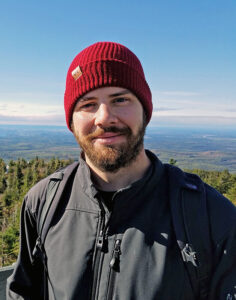
A first glance at Kevin Berry’s work history looks a little random. His curriculum vitae is sprinkled with a wide variety of topics, from disease, species loss, fisheries, to weather.
“Typically, if you look at an engineer or physical scientist, they might specialize in a species, or a place, or a specific thing.” Berry says that as an economist, there is a social science aspect to what he does. “I’m interested in a type of decision, and a type of human behavior, how people respond to looming catastrophic risks.”
Berry says the common thread in what he studies is that there is something that can be done about the risk. He uses Lyme disease as an example.
“You can change your behavioral patterns and spend less time where there are ticks,” he says. “You can wear different types of clothing or you can get medical treatment after getting sick.”
Berry says this is a pattern of three broad strategies that are used in response to risk: prevention, adaptation, and mitigation.
“We can invest in prevention to keep the bad thing from occurring,” says Berry. “We can invest in infrastructure and training practices, the things that make it less likely we’ll have a problem.”
“We can adapt to a problem,” adds Berry. “Basically, we can make it so that if it does occur, it’s not as bad.”
“And then we can mitigate things once they happen,” Berry concludes. “We can clean up afterwards to avoid negative impacts.”
Berry attended the University of Wyoming where he received a bachelor’s and Ph.D. in resource economics. He’s currently a Professor of Economics at the University of Alaska Anchorage, where he chairs their Economics Department.
He works with economic models that help analyze tradeoffs. These models can help make decisions when options aren’t easy to compare. There are different models that can help adapt to random occurrences that affect a decision.
“They’re cool math problems,” Berry says. “Every time we change a little bit, we have to find a new strategy. You can turn a really complicated thing into a really neat problem, where we can talk about the returns to preventing disasters in the same way we’d talk about investing in the stock market.”
He gives an example related to early childhood education. Berry serves as the current Board president for Thread, a local nonprofit that works to advance the quality of early education and child development, and on the board of the Anchorage Child Care and Early Education Fund. He started volunteering because he’s a father of three kids, but the topic also piqued his professional interests.
“We can think of childcare and early education as prevention for a lot of other social ills,” Berry says. “We know from various economic research at the University of Chicago and James Heckman’s Institute that there is a massive return in reduced criminal activity, higher educational outcomes, and better career outcomes.”
That curiosity and drive to use his talents to make a difference also brought him to the Council. One of the Council’s main priorities is to reduce the risk of oil spills. It’s important to understand all the options and tradeoffs.
“Obviously, every time we recommend an improvement or investment, for instance, in the response fleet, we’re hoping to make a potential spill less severe,” Berry says. “We want balance to make sure that we’re getting the most risk reduction for the time and effort.”